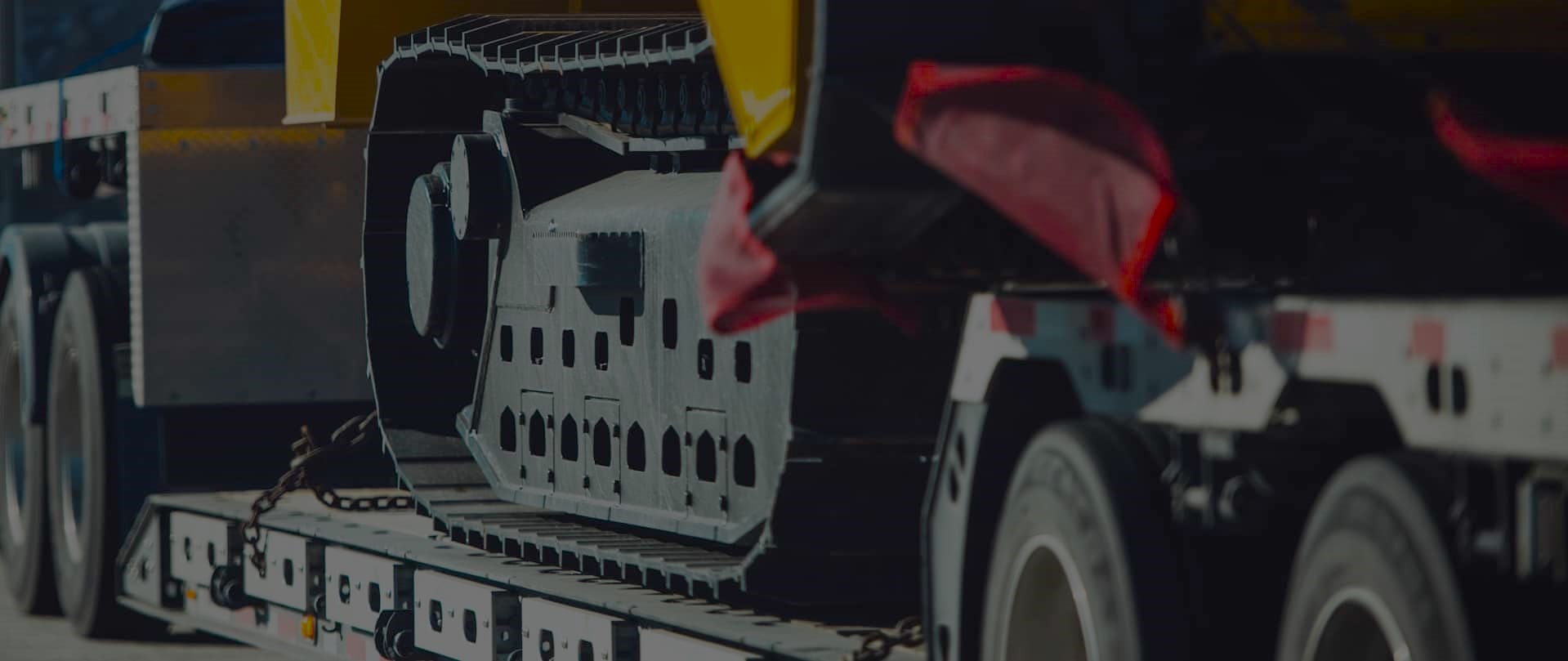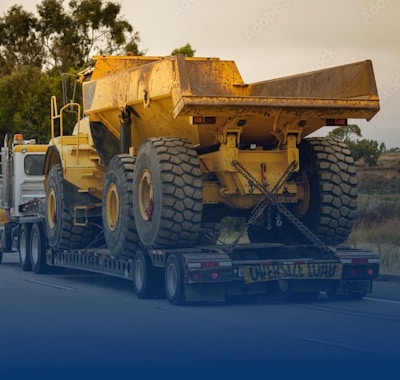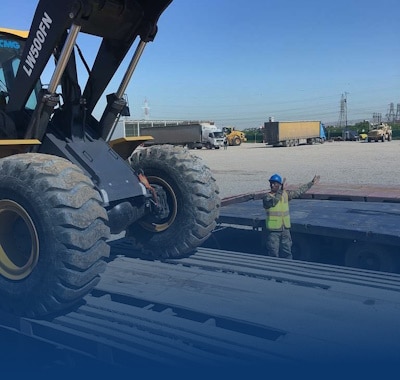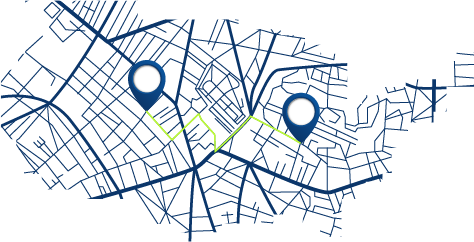Florida’s Oversize Curfews: What You Need to Know
Freedom Heavy Haul can offer expedited Pickup and Delivery for any size shipment anywhere in the USA. Contact us today for No Hassle, No Pressure Pricing.
This guide sets you up to plan safe, legal moves across state routes and tolled roads. You’ll get plain-language information on permit timing, daytime windows, weekend allowances, peak-hour limits and holiday blackouts.
Permits usually run ten days, and standard operating time covers one-half hour before sunrise to one-half hour after sunset. Overweight-only vehicles often have 24/7 flexibility, while dimensional loads face tighter time rules.
Weekend travel depends on width. Loads up to 10 feet may run during daylight on Saturday and Sunday. Wider loads hit shorter windows and midday cutoffs. County peak-hour curfews in Hillsborough and Miami-Dade can block morning and evening moves.
The Turnpike has specific size caps and added tolls that affect route choice. New Year holiday limits and severe weather or poor visibility can pause even permitted movement. Read each permit closely to avoid surprises.
How Florida handles night moves: your quick primer for future hauls
Night movement is driven by vehicle type and permit details. Dimensional loads generally operate only during daylight: one-half hour before sunrise to one-half hour after sunset. If your unit is overweight-only and within legal dimensions, many permits show that movement allowed overnight.
User intent and when night movement may be allowed
If you plan late departures, confirm the permit. A document that lists no local prohibitions usually unlocks 24/7 travel for overweight-only rigs. Never assume — the permit language controls.
Daytime windows, weekend rules, and what “movement allowed” actually means
Weekend travel depends on width: loads up to 10 feet may travel both weekend days during daylight. Loads over 10 feet up to 14 feet usually stop by 12:00 noon on Saturday and Sunday.
- Visibility: movement stops if visibility drops under 500 feet or severe weather appears.
- Local rules: county peak-hour curfews may add time blocks on top of statewide guidelines.
- Scheduling tip: build buffers so pickups don’t force travel past sunset.
Florida oversize curfews and restrictions for night hauls
Night moves must fit tight statewide windows, so plan departures around natural light and county blackout periods. The standard operating time runs from one-half hour before sunrise to one-half hour after sunset. Dimensional loads must follow this window without exception unless the permit says otherwise.
Weekend movement and the noon cutoff
Weekend travel is width-sensitive. Loads 10 feet wide and under may operate during daylight on Saturday and Sunday. Loads over 10 feet up to 14 feet must stop by noon on both weekend days.
County peak-hour blackout windows
Local curfews can add more limits. Hillsborough and Miami-Dade enforce no movement from 7:00–9:00 a.m. and 4:00–6:00 p.m., which can block morning and evening plans on major routes.
When overweight-only travel is allowed
Overweight-only vehicles often qualify to travel 24/7. Confirm your configuration stays within legal dimensions and that the permit includes no added local limits.
Turnpike limits and toll impact
The Turnpike caps loads at 12 feet wide and 13 feet 6 inches high. Expect extra tolls based on axle count — roughly $0.25 per mile for seven axles and $0.20 per mile for five. Route choice should weigh toll cost versus time saved.
“Schedule staging near the noon cutoff and check county lists before dispatch to avoid surprises.”
- Tip: Stage fuel and escorts before weekend noon cutoffs.
- Tip: Re-route to non-toll roads if peak windows or tolls outweigh the time benefit.
Holiday rules you can’t ignore: New Year’s and the big six
Holiday weeks compress available travel days; schedule staging before the blackout. Major holidays shut many permitted movements by design. Treat the calendar as a critical planning tool.
Holidays that commonly affect moves:
- New Year’s Day
- Memorial Day
- Independence Day
- Labor Day
- Thanksgiving
- Christmas Day
New Year’s Day specifics
On Jan. 1 no OSOW freight longer than 80 feet, taller than 14 feet 6 inches, or wider than 10 feet may move. State offices close Jan. 1–2, so permits and help lines are unavailable.
Day-before and day-after notes
Permits often add extra limits on the days immediately before and after New Year’s, Thanksgiving, and Christmas. Assume tighter rules unless the permit states otherwise.
“Verify inches on signage and paperwork. Holidays are when small errors become big fines.”
| Holiday | Typical Limit | Office Status | Planning Tip |
|---|---|---|---|
| New Year’s Day | ≤80 ft, ≤14’6″, ≤10 ft | Closed Jan. 1–2 | Stage the load before Dec. 31 |
| Thanksgiving | Many moves barred | Limited services | Avoid holiday eve departures |
| Christmas | Similar to Thanksgiving | Limited services | Hold nonessential loads |
Dimensions, weights, and escorts: know the triggers before you roll
Know your baseline limits. Confirm basic dimensions and gross weight before you book a move. That first check often decides whether you need a permit at all.
Legal limits versus routine permit thresholds
The legal baseline is 8’6″ width, 13’6″ height, and 75′ overall length. Overhang allowance is 3′ front and rear. Gross weight without a special permit is 80,000 lbs.
Axle caps matter: single 22,000 lbs, tandem 44,000 lbs, and tridem 66,000 lbs. Permit weight rises with proper axle spacing and may reach much higher totals on eight-axle rigs.
When escorts and special surveys apply
Escort triggers depend on width, height, and route. Loads over 12′ typically need one escort; over 14′ usually need two. Beyond 15′ may require State Police.
Height is critical. Anything over 14’6″ needs a high-pole pilot. Over 16′ often requires two high-pole escorts and a formal route survey.
- Routine permits can allow up to 15′ width, 15′ height, and 150′ length.
- A written route survey is mandatory at 15′ height and above, and sometimes at lower heights on narrow two-lane roads.
- Document axle spacing to justify higher weight on the permit.
“Complete surveys and book escorts early; availability affects timing as much as route choice.”
Signs, flags, and lights: visibility and warning requirements
Clear marking wins inspections: signs, flags, and beacons must meet exact specs before you roll. Follow the permit and meet the device thresholds tied to width, height, and length.
Sign rules: a yellow sign with black letters is mandatory when an oversize load exceeds 10 feet wide, legal length, or 14 feet high. Standard size is about 7 feet by 18 inches with 12-inch letters and a 1.5-inch stroke to ensure readability at speed.
Flags and pilot mounting
Flags must be red or fluorescent orange and measure 18 inches square. Fix them at all four corners and any projection.
On escort and pilot vehicles mount flags at a 40–70 degree angle so they show in mirrors and stay visible during lane changes.
Amber 360-degree warning lights
Use amber 360-degree beacons visible at 500 feet in normal conditions. One beacon on the tractor is required for loads over 10 feet wide or with more than 4 feet rear overhang.
If width exceeds 12 feet, height tops 14 feet 6 inches, or length reaches 85 feet, fit two 360-degree amber lights—one forward and one rear—to meet warning device requirements.
“A simple pre-trip check of signs, flags, and lights prevents most roadside delays.”
- Placement tip: don’t block plates, lamps, or permit numbers with signs.
- Redundancy: carry spare flags, brackets, and a backup beacon onboard.
- Pre-trip: test lights at start and at each fuel stop to keep visibility intact.
| Trigger | Sign | Flags | Lights |
|---|---|---|---|
| Over 10 feet width | Yellow sign ~7′ x 18″, 12″ letters | 18″ square on four corners | One 360° amber beacon on tractor |
| Over 12 feet width | Same sign; verify placement | Extra flags on projections | Two 360° amber beacons (front & rear) |
| Height >14’6″ or length ≥85′ | Yellow sign and permit displayed | Flags at overhang points | Two 360° amber beacons; high-pole pilot may be required |
Permits, routing, and timing: getting compliant before your move
Start every move by confirming the exact permit window printed on your document. Many permits run ten days, while single-trip versions may show a 120-hour span. Read the dates and any listed hour limits—your permit controls, not general rules.
Routing Authorization and weight rules
If gross weight meets or exceeds 100,000 pounds, obtain Routing Authorization and keep that paperwork in the vehicle at all times. Inspectors expect to see routing approval with the permit and any escort credentials.
Applying with FDOT
Apply early through the Florida Department of Transportation Online Permit Application System. You may also visit the Tallahassee Barry Building at 3185 South Blairstone Rd. Peak seasons and holiday closures can add days to processing, so plan ahead when selecting routes.
Weather, visibility, and operating hours
Typical operating time runs from one-half hour before sunrise to one-half hour after sunrise (sunset). Movement stops if visibility falls below 500 feet due to fog, heavy rain, or other hazards—even during valid permit hours.
- Checklist: copies of permits, Routing Authorization, escort IDs, and contact info.
- Stage fuel and crews to avoid the weekend noon cutoff.
- Verify Turnpike limits, toll impacts, and special route notes before dispatch.
| Permit Type | Typical Validity | Notes |
|---|---|---|
| Standard | 10 days | Flexible routing within state rules |
| Single-trip | 120 hours | Strict start and end times |
“Keep a complete permit packet onboard; it shortens roadside checks and proves compliance.”
Plan your next Florida night haul with confidence
Plan each leg around permit windows and sunrise to avoid costly delays. Confirm permit dates, allowed hours, and any county curfews before you load. Build schedules around the one-half hour before sunrise to one-half hour after sunset window and weekend noon cutoffs for wider loads.
Check whether the unit is dimensional or overweight-only; overweight-only units often qualify for 24/7 movement allowed when dimensions meet requirements. Measure width, height, and overhang in inches and match sign, flag, light, pilot, and escort needs to avoid roadside holds.
Keep Routing Authorization onboard if weight hits 100,000 pounds. Factor Turnpike limits and tolls, watch visibility under 500 feet, and plan holiday moves—New Year blocks certain thresholds. With clear information, checklists, and early coordination, your team will meet requirements and move with less stress.







